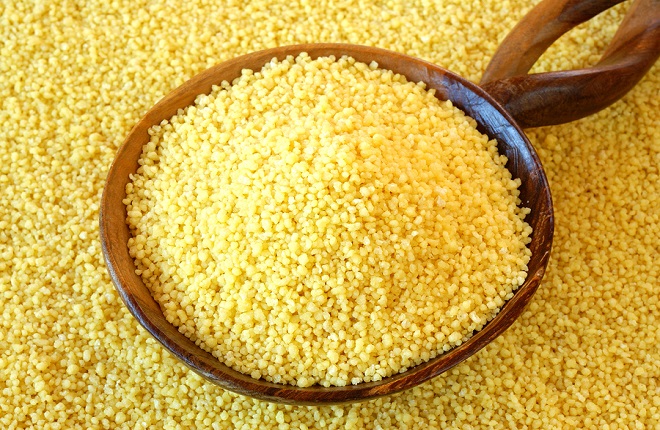Cous cous, an ancient food
Cous cous is a traditional North African food made of small grains of durum wheat processed with water, then steamed and dried. The first evidence we have about the couscous consumption dates back to 1400. This food commemorates the tradition of the Berber people who had only one type of wheat to be processed before being eaten and which preparation was (and still is) usually quite long.


Cous cous is a traditional North African food made of small grains of durum wheat processed with water, then steamed and dried. The first evidence we have about the couscous consumption dates back to 1400. This food commemorates the tradition of the Berber people who had only one type of wheat to be processed before being eaten and which preparation was (and still is) usually quite long.
Originally, in fact, women used to meet up in large groups to devote themselves exclusively to the preparation of large quantities of cous cous and then they used to stock up the cous cous in large bags, ready to be cooked when needed. Nowadays only some rural populations and some Berber tribes still use to make the couscous this way, but most of the cous cous is now produced industrially, because of the large quantity required from the global market. To cook the cous cous it would be best to use the “couscoussier”, a pot made by two main parts:
a large base pot for cooking meats and vegetables, and a steamer basket at the top, to cook couscous with the steam from the food underneath, which helps to make cous cous soft and naturally tasty.
It is an increasingly popular alternative to pasta, rice and other cereals. It’s not often eaten alone, but it is used very often as an accompaniment to meat dishes or vegetables since it can absorb very well all the sauces. It is also rich in fiber, vitamins and minerals and contains no cholesterol because of its very low fat intake. One hundred grams of cous cous roughly corresponds to one hundred and fifty calories, but it equally fulfill as pasta, with half of the calories. Eating cous cous is a real tradition, in fact often the main meals, accompanied by couscous, is put at the center of the diners, only to be enjoyed together with the whole family or friends, eating with hands, all from the same plate. The cous cous is also a powerful ally to clean our intestines from the dross that can promote tumor formation, and was often offered to the sick and children to treat them after long illnesses. Cous cous is now eaten in many countries of the world, even in different forms: in Israel, for example it is consumed as “Maftul”, a larger grains cous cous version. However, in Western countries it is eaten more as a side dish, served with meat or fish dishes, mixed into salads or even enjoyed as a dessert, like cous cous pudding.
{youtube}xv5sr4B5K6o{/youtube}
This content if for our subscribers
Subscribe for 1 year and gain unlimited access to all content on eastwest.eu plus both the digital and the hard copy of the geopolitical magazine
Gain 1 year of unlimited access to only the website and digital magazine



